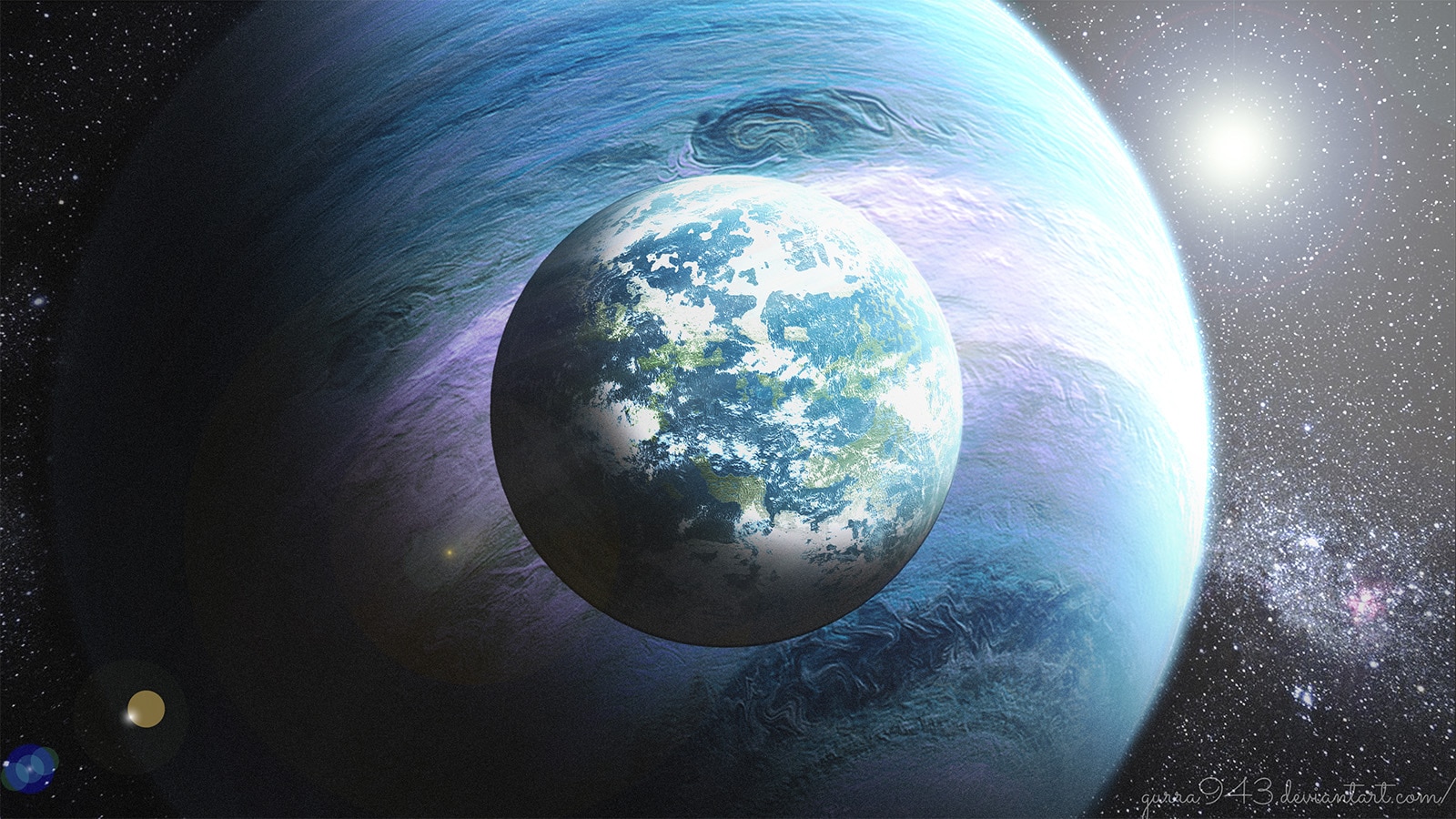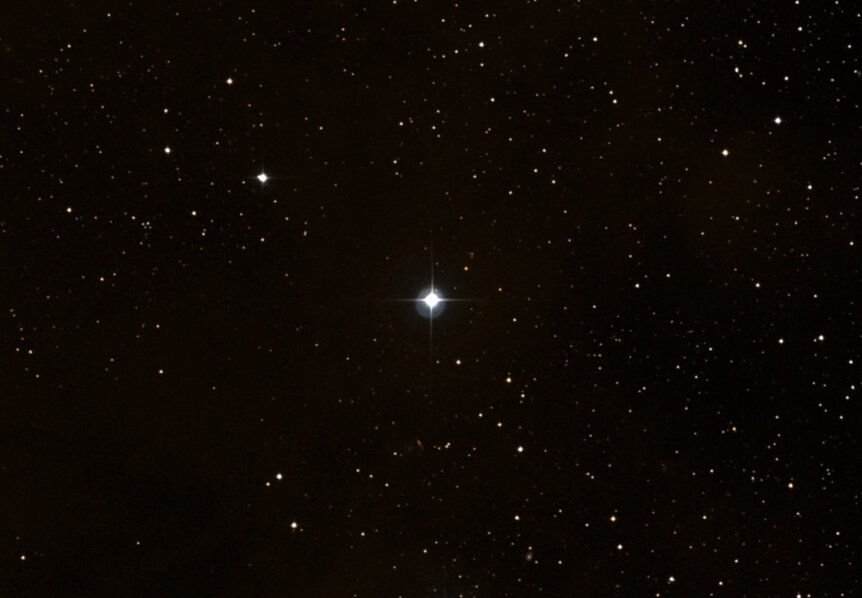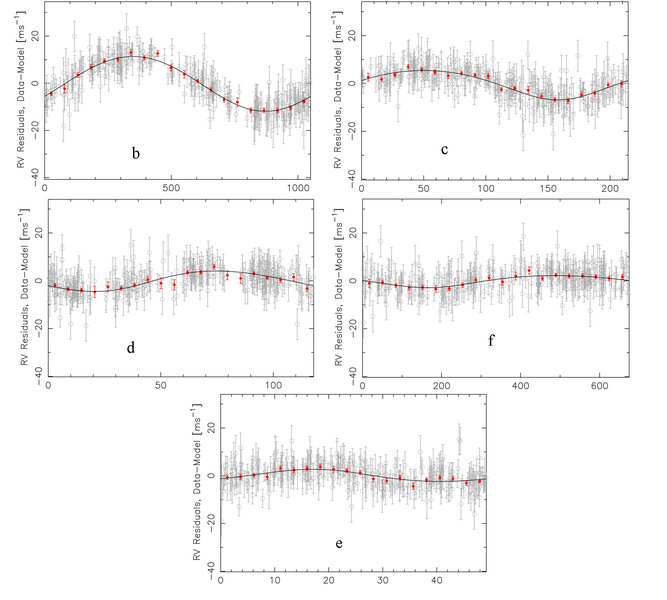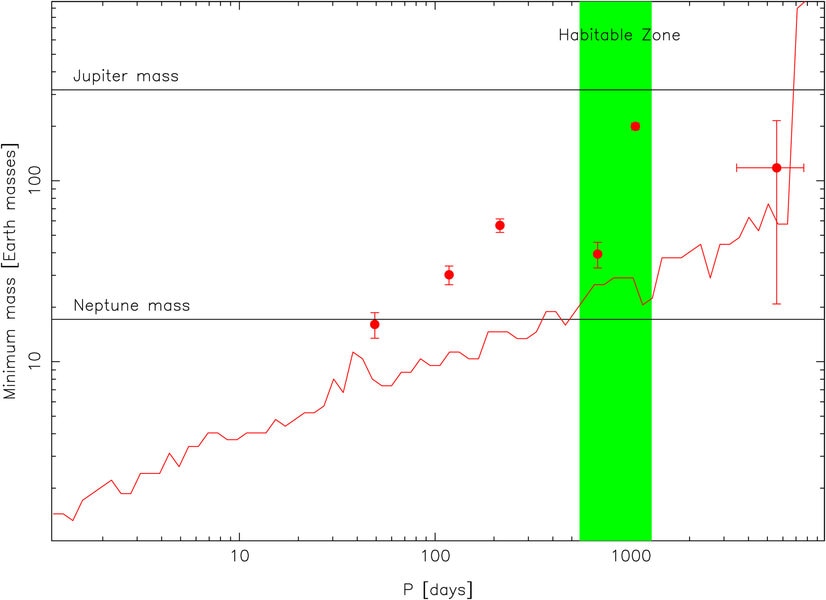Create a free profile to get unlimited access to exclusive videos, sweepstakes, and more!
A star like the Sun has *six* gas giants orbiting it... with two in its habitable zone

Astronomers have discovered a pretty interesting multi-planetary system orbiting a nearby star. Each of the exoplanets is apparently a gas giant, but two of them orbit the star in the habitable zone, where liquid water could exist!
To be clear, gas giants don’t have a surface — they have such tremendous atmospheres that as you go down inside them the air just gets thicker, merges into a liquid mantle, then finally gets crushed into a solid deep down near the core — but they do tend to have moons, some of them quite large. And that makes this system very interesting indeed …
The planets orbit the star HD 34445 (the 34,445th entry in the Henry Draper catalog of brightish stars). The star itself is at first glance a lot like the Sun: It’s a type G0 star, just slightly warmer and just a scosh more massive than the Sun (1.07 times as massive, to be specific).
I was surprised, however, to see it’s bigger than I expected, about 1.38 times the Sun’s diameter, and twice as luminous. I’d think those numbers would be much closer to the Sun’s, but then I saw the age and understood: It’s 8.5 billion years old, nearly twice as old as the Sun, and that means it’s starting to run out of fuel in its core. It’s starting the slow expansion into red giant territory.
It’s pretty close to us as stars go, about 150 light-years away, so it appears relatively bright as well — about 7th magnitude, which is a little bit fainter than you can see with the naked eye, but could easily spot in binoculars.
Through a big telescope, then, it’s really bright, and that makes it a good target to look for planets. Bright stars mean lots of photons for your camera, and that helps when you’re looking for small effects.
The first planet, HD 34445b, was announced in 2010. They found it using what’s called the reflex velocity method. The way I like to think of that is this: Imagine a big person facing a smaller person, and they hold hands. Now they swing each other around. The smaller person makes a big circle, and the bigger person makes a small circle. The “reflex” part comes in because as one person moves away from you the other moves toward you, and vice versa.
Same with stars and planets. A planet orbits the star due to the star’s gravity, but the planet has mass and gravity too, so the star responds by making a smaller circle. They actually both orbit their mutual center of gravity/center of mass, what astronomers call the "barycenter." We can’t see that planet directly because the star is bright and the planet faint, and the circle the star makes is far too small to see directly either.
But, as the star moves in a circle it sometimes approaches us, and sometimes moves away. When it approaches us its light is slightly shifted to the blue due to the Doppler effect, and it shifts to the red as it moves away. That can indeed be measured, though it's a small effect. The very first exoplanets were found this way!
After the first planet was found around HD 34445, astronomers concentrated on this star, using bigger and better telescopes and instruments to look for more. In October of 2017, another team announced they had found five more planets, for a total of six! They had taken 333 observations over 18 years to get them, so this is a really long-term project.
As is the convention, the planets are named HD 34445 b through g, in the order of their discovery. HD 34445 b takes 1057 days to orbit the star (about 3 years), and the rest take 215, 118, 49, 677, and 5,700 days (that last one is pretty far out from the star). And they're all pretty big: In terms of Jupiter's mass, they are (again in order) 0.63, 0.17, 0.1, 0.05, 0.12 and 0.38 as big as our own biggest planet.
For comparison, Saturn is about 1/3rd of Jupiter's mass, and Neptune about 1/20th. Jupiter is over 300 times the mass of Earth, so it seems like a decent bet that all these planets in the HD 34445 system are gas giants.
Right away that's interesting; this is clearly a very different solar system from our own! We only have four such big planets. They're also spread out around HD 34445, ranging from 40 million to a billion kilometers out from their star. There might be more farther out, but they would be very hard to detect; the reflex velocity method is easier to use for massive planets closer in to the star.
I'll note there could be more Earth-sized planets here too; there's room for them between the bigger ones or closer in to the star, but again this method makes it hard to spot them because of their lower mass.
But don't fret about not finding habitable worlds around HD 34445 just yet. This is where things get interesting indeed.
Two of the planets — HD34445b and f — are located in the star's habitable zone: the region around the star where liquid water can exist on the surface of a body. For this star, that's about 200 – 350 million kilometers out. Closer than the inner edge and it gets too hot (for a terrestrial (rocky) planet, you get a runaway greenhouse effect and the planet gets scorched), and farther than the outer edge and even the best greenhouse effect won't keep you from freezing.
HD 34445b is 311 million km out, and HD 34445f is 230 million. Not bad.
Now again, these are gas giants! HD 34445 b is 200 times the mass of the Earth, and HD 34445f, while smaller, is still about 40 times our heft. These are not going to be planets our Earth.
But they might have moons. Exomoons! Our own solar system's gas giants have huge retinues of such satellites, and some are big: Ganymede (orbiting Jupiter) and Titan (Saturn) are about as big as Mercury! And it’s not too ridiculous to think even bigger ones might exist, making some of these moons potentially Earth-sized, and maybe, maybe, Earth-like.
Heck, Titan is well over a billion kilometers from the Sun, and it has an atmosphere thicker than ours! If it were in a more Earth-like orbit around the Sun, it could possibly be a pretty nice place to live. Could there be such habitable moons around these alien worlds?
If so, I have to wonder. Their star is old and slowly expanding, becoming more and more luminous over time. If these moons exist and if they are habitable and if there is life there, it's in trouble. As the star turns into a proper red giant those moons will get well and truly cooked. It's a story played out over and again in the galaxy, and will here too with our own Sun. Eventually, like in a few billion years or so.
One interesting bit, though, is that moons farther out from HD 34445 will go from frozen to quite clement. Will they get a chance for life? Maybe, but then their warm season won’t last that long; eventually the star sheds its outer layers in a series of violent paroxysms and finally reveals its core: a white dwarf that’s very hot but so small it provides very little warmth. Everything in the system will eventually freeze.
Now, this is all speculation. We don't know there are moons orbiting these planets, and we have no idea if it's possible to have a habitable moon orbiting a gas giant just because they're in the habitable zone around their star. I can think of lots of reasons this could be a nasty place (the radiation around the gas giant incited by a strong magnetic field, huge tidal stresses causing endless seismic activity, and so on).
… but the Universe is vast, and in such an expanse even the unlikely is bound to happen many times. Finding an example of gas giants like these in a fairly nearby star implies it's common in the galaxy (if it were very rare w,hat are the odds it would happen in a star that's only a tenth of a percent of the galaxy’s diameter away from us?).
Right now, we just don't know. But our collection of known exoplanets grows nearly every day, as does our ability to explore them. Nature has a way of surprising us the deeper we investigate it. And the science fiction fan in me would love to see these be true. Let's hope.

















